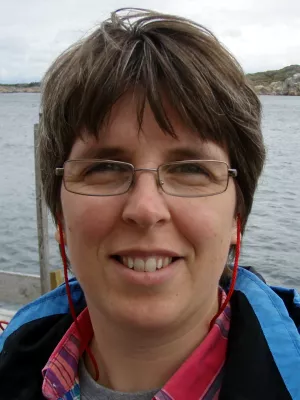
Helena Alexanderson
Professor

Widespread global peatland establishment and persistence over the last 130,000 y
Author
Summary, in English
Glacial-interglacial variations in CO
2
and methane in polar ice cores have been attributed, in part, to changes in global wetland extent, but the wetland distribution before the Last Glacial Maximum (LGM, 21 ka to 18 ka) remains virtually unknown. We present a study of global peatland extent and carbon (C) stocks through the last glacial cycle (130 ka to present) using a newly compiled database of 1,063 detailed stratigraphic records of peat deposits buried by mineral sediments, as well as a global peatland model. Quantitative agreement between modeling and observations shows extensive peat accumulation before the LGM in northern latitudes (>40
°
N), particularly during warmer periods including the last interglacial (130 ka to 116 ka, MIS 5e) and the interstadial (57 ka to 29 ka, MIS 3). During cooling periods of glacial advance and permafrost formation, the burial of northern peatlands by glaciers and mineral sediments decreased active peatland extent, thickness, and modeled C stocks by 70 to 90% from warmer times. Tropical peatland extent and C stocks show little temporal variation throughout the study period. While the increased burial of northern peats was correlated with cooling periods, the burial of tropical peat was predominately driven by changes in sea level and regional hydrology. Peat burial by mineral sediments represents a mechanism for long-term terrestrial C storage in the Earth system. These results show that northern peatlands accumulate significant C stocks during warmer times, indicating their potential for C sequestration during the warming Anthropocene.
Department/s
- Quaternary Sciences
Publishing year
2019
Language
English
Pages
4822-4827
Publication/Series
Proceedings of the National Academy of Sciences of the United States of America
Volume
116
Issue
11
Document type
Journal article
Publisher
National Academy of Sciences
Topic
- Geology
Keywords
- Carbon
- Carbon burial
- Methane
- Peatlands
- Quaternary
Status
Published
Project
- Glacial history of northern Sweden
ISBN/ISSN/Other
- ISSN: 0027-8424

